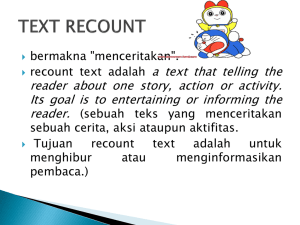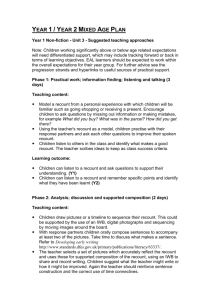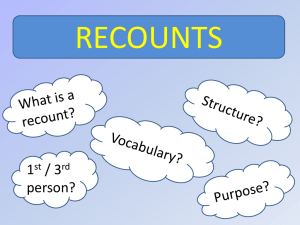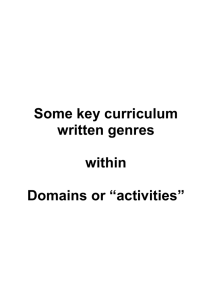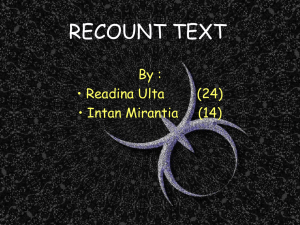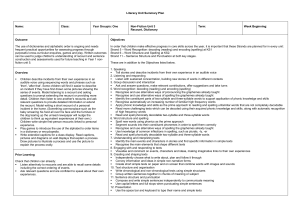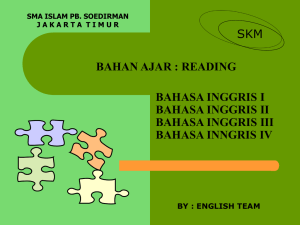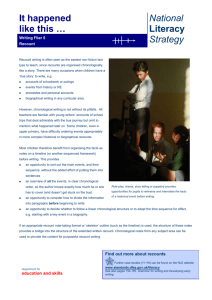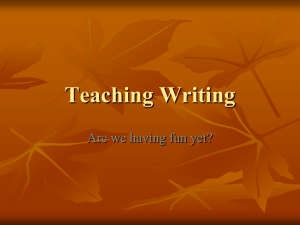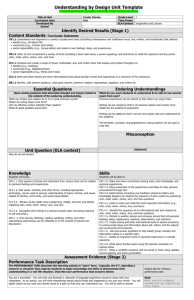Recount
advertisement
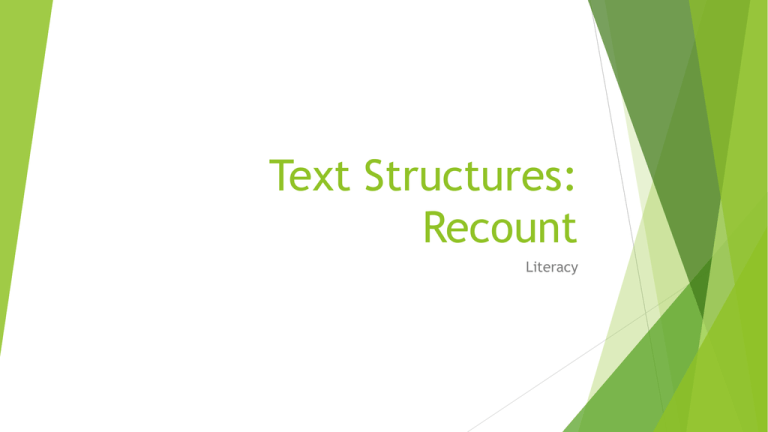
Text Structures: Recount Literacy Goal: I can identify the features of, and write a recount. 1. 2. 3. 4. I don’t know much about this topic. I know a little about this topic. I know a bit about this topic and have used it. I could explain this topic to my peers and assist them APK Discuss with your partner things that you think make recount writing interesting. Make a list of 3 of these things in your interactive notebook. What is the Purpose of Recount Writing? Recounts are used to relate experiences or retell events that happened to the writer to inform, entertain or reflect. Recounts can be personal, factual or imaginative. Recounts can be either written or spoken. Examples of recounts include: Biographies and autobiographies Newspapers or the television news Letters and postcards Textbooks Conversations with friends Types of Recounts There are different types of recounts, including: Personal recount – retelling an activity that the writer has been personally involved in and may be used to build the relationship between the writer and the reader e.g. anecdote, diary journal, personal letter Factual recount – reporting the particulars of an incident by reconstructing factual information e.g. police reconstruction of an accident, historical recount, biographical and autobiographical recounts Imaginative recount – applying factual knowledge to an imaginary role in order to interpret and recount events e.g. A Day in the Life of a Roman Slave, How I Discovered Radium Procedural recount – recording the steps in an investigation or experiment and thereby providing the basis for reported results or findings Literary recount – to retell a series of events for the purpose of entertaining What are the features/characteristics of a recount? Title: should tell the reader what the recount is about Orientation: provides the reader with background information needed to understand the text. Who was involved? What happened? When did it happen? Where did it happen? Why did it happen? Sequence of events: what happened? This needs to be written in the order of occurrence. First.. Next… During… Finally… Re-orientation – rounds off the sequence of events. This may be in the form of a summary or a return to the starting point. You may discuss your personal feelings of what has happened in your recount. Think about… Purpose – what do I want my writing to do/achieve? e.g. accurately retell an event Audience – for whom am I writing? e.g. my teacher, peers Identity – whom am I writing as? e.g. am I an authority figure or expert in the area? Attitude – how will I make my audience feel? e.g. informed, happy, sad Let’s look at an example On Thursday, 14th of August Moonee Ponds Primary School celebrated Book Week with a dress up day and Book Week Trivia for the grade 3-6 students. Everyone dressed up as a character from their favourite book and people got into the spirit of things competing for their house teams in the Book Week Trivia. The book week trivia was great fun, with people showing their knowledge of authors and books while eating food in their house colours. There were 4 rounds of questions, a famous faces round and some excellent dance moves being busted, trivia was over and everyone waited for the results to be announced at assembly. After lunch, everyone headed to assembly for the Book Week Dress-up Parade and to hear the results of the trivia quiz. There were so many fantastic costumes including Where’s Wally’s and Wanda’s, Steve from Minecraft, Harry Potter’s and Cat in the hat’s. MPPS Book Week 2014 was a great success, with everyone involved having a fantastic day and showing off their love for books and reading. Application Plan, draft and edit a recount about how you celebrated your last birthday. You will have 40 minutes to write your piece. You may use the checklist to assist. Reflection Reflect on how many points you managed to tick off on the checklist. Were you missing any important features? Goal: I can identify the features of, and write a narrative 1. 2. 3. 4. I don’t know much about this topic. I know a little about this topic. I know a bit about this topic and have used it. I could explain this topic to my peers and assist them
